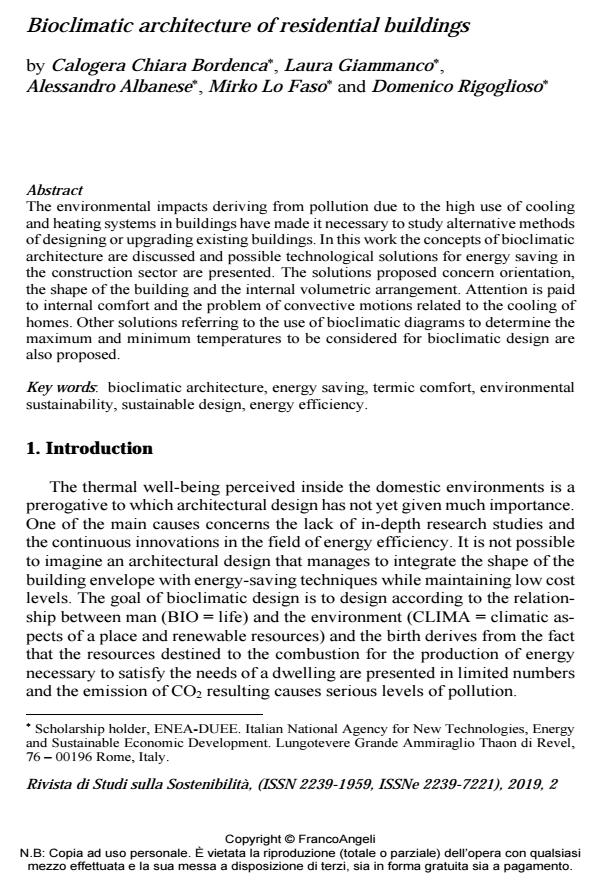Bioclimatic architecture of residential buildings
Journal title RIVISTA DI STUDI SULLA SOSTENIBILITA'
Author/s Calogera Chiara Bordenca, Laura Giammanco, Alessandro Albanese, Mirko Lo Faso, Domenico Rigoglioso
Publishing Year 2020 Issue 2019/2 Suppl.
Language English Pages 16 P. 179-194 File size 505 KB
DOI 10.3280/RISS2019-002-S1012
DOI is like a bar code for intellectual property: to have more infomation
click here
Below, you can see the article first page
If you want to buy this article in PDF format, you can do it, following the instructions to buy download credits

FrancoAngeli is member of Publishers International Linking Association, Inc (PILA), a not-for-profit association which run the CrossRef service enabling links to and from online scholarly content.
The environmental impacts deriving from pollution due to the high use of cooling and heating systems in buildings have made it necessary to study alternative methods of designing or upgrading existing buildings. In this work the concepts of bioclimatic architecture are discussed and possible technological solutions for energy saving in the construction sector are presented. The solutions proposed concern orientation, the shape of the building and the internal volumetric arrangement. Attention is paid to internal comfort and the problem of convective motions related to the cooling of homes. Other solutions referring to the use of bioclimatic diagrams to determine the maximum and minimum temperatures to be considered for bioclimatic design are also proposed.
Keywords: Bioclimatic architecture, energy saving, termic comfort, environmental sustainability, sustainable design, energy efficiency.
Calogera Chiara Bordenca, Laura Giammanco, Alessandro Albanese, Mirko Lo Faso, Domenico Rigoglioso, Bioclimatic architecture of residential buildings in "RIVISTA DI STUDI SULLA SOSTENIBILITA'" 2 Suppl./2019, pp 179-194, DOI: 10.3280/RISS2019-002-S1012